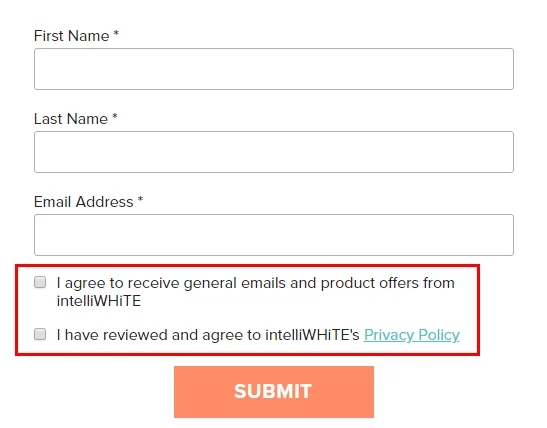Introduction
Clickwrap agreements have become an essential part of the digital landscape, shaping the way businesses interact with their customers. Whether you’re a frequent online shopper, a software user, or an app enthusiast, chances are you’ve encountered a clickwrap agreement. But what exactly are these agreements, and why are they significant?
In this article, we will explore the nature of these agreements, providing you with a detailed understanding of their purpose, benefits, and legal implications. From their definition to their implementation and enforceability, we’ll cover it all. So, let’s dive in and unravel the intricacies of clickwrap agreements!
Understanding the Nature of Clickwrap Agreements
Clickwrap agreements refer to the online contracts that users are required to accept before accessing certain digital services, such as purchasing products, using software, or downloading mobile apps. These agreements typically consist of terms and conditions, privacy policies, and other legal provisions that users must agree to by clicking an “I Agree” button or a similar affirmative action.
These agreements serve as a legally binding contract between the service provider and the user, outlining the rights, responsibilities, and limitations of both parties. They are designed to protect the interests of businesses while ensuring that users are aware of and comply with the terms of service.
They are essential in the digital realm because they establish a clear understanding between the service provider and the user regarding their respective obligations and expectations. By requiring users to actively agree to the terms, these agreements provide a higher level of enforceability compared to other forms of online agreements, such as browsewrap agreements.
How Clickwrap Agreements Work
The user interface implements clickwrap agreements by presenting the terms and conditions to the user. When a user attempts to access a service or product, the interface typically redirects them to a webpage or a pop-up window containing the agreement. The user must then scroll through or read the agreement and actively indicate their acceptance.
Affirmative action can be as simple as clicking an “I Agree” button or checking a box stating “I have read and agree to the terms and conditions.” In some cases, the user may be prompted to provide additional information, such as their name or email address, to further confirm their acceptance.
Once the user accepts the terms, the service or product is granted access to them, and the clickwrap agreement becomes binding. The user is expected to abide by the agreed-upon terms and conditions throughout their interaction with the service or product.
Key Elements of Clickwrap Agreements
Clickwrap agreements consist of several key elements that ensure their validity and enforceability. These elements include:
1. Offer and Acceptance:
The service provider presents the terms and conditions as an offer to the user, and the user accepts the offer by taking affirmative action.
2. Consideration:
These agreements require mutual consideration, which means that both parties must exchange something of value. In most cases, the user gains access to the service or product, while the service provider obtains the user’s consent to the terms.
3. Clear and Unambiguous Language:
These agreements must use clear and understandable language to ensure that users can comprehend the terms they are agreeing to. Ambiguous or misleading language can undermine the enforceability of the agreement.
4. Recordkeeping:
Service providers are often required to keep records of clickwrap agreements, including the date and time of acceptance, the IP address of the user, and any additional information provided during the acceptance process.
5. Severability:
The severability clause states that if any part of the clickwrap agreement is found to be invalid or unenforceable, the remaining provisions of the agreement will still be in effect.
Also read: What are buy-side and sell-side contracts?
Benefits of Clickwrap Agreements
Using clickwrap agreements offers several benefits to both service providers and users:
1. Enhanced Enforceability:
These agreements have a higher level of enforceability compared to other online agreements. Since users must take affirmative action to indicate their acceptance, it is easier for service providers to prove that the user agreed to the terms.
2. Clear Communication of Terms:
These agreements provide a clear and concise way to communicate the terms and conditions to users. By presenting the terms in a structured format, users can easily understand their rights and obligations.
3. Protection of Intellectual Property:
These agreements often include provisions that protect the intellectual property rights of service providers, preventing unauthorized use or distribution of their content or software.
4. Mitigation of Legal Risks:
These agreements help service providers mitigate legal risks by establishing a contractual relationship with users. When users violate the terms, the service provider can take appropriate legal action.
5. User Accountability:
These agreements hold users accountable for their actions and behaviors while using the service or product. This helps maintain a safe and respectful online environment.
The Legal Enforceability of Clickwrap Agreements
Clickwrap agreements have gained wide acceptance and recognition in the legal system, making them legally binding in many jurisdictions. However, it is important to note that the enforceability of these agreements can vary depending on several factors. Let’s explore some of the key considerations:
1. Mutual Assent
For a clickwrap agreement to be legally binding, it must demonstrate mutual assent between the parties involved. This means that both parties must have a clear understanding of the terms and willingly accept them. Courts often evaluate the design, language, and overall presentation of the agreement to determine whether mutual assent has been established.
2. Notice and Reasonable Notice
The agreement should provide reasonable notice to users regarding the terms they are accepting. This includes making the terms easily accessible, using clear and concise language, and ensuring users have an opportunity to review the agreement before accepting. The more conspicuous the notice, the stronger the argument for enforceability.
3. Unconscionability
An unconscionable contract is one that is so one-sided or unfair that it would be considered oppressive to enforce it. Courts may examine the fairness of a clickwrap agreement to ensure it does not unfairly disadvantage or exploit users. To avoid potential issues of unconscionability, it is advisable to draft clickwrap agreements with reasonable and balanced terms.
4. Capacity to Consent
For a clickwrap agreement to be legally binding, the user must have the capacity to consent to the terms. This typically requires that the user is of legal age and possesses the mental capacity to understand the implications of the agreement. If a user lacks the necessary capacity, the agreement may be deemed unenforceable.
Best Practices for Implementing Clickwrap Agreements
To optimize the effectiveness and user experience of clickwrap agreements, service providers should follow these best practices:
1. Make the Agreement Noticeable:
Ensure that the clickwrap agreement is prominently displayed, clearly visible, and easily noticeable to users. This can be achieved through pop-up windows, banners, or other attention-grabbing methods.
2. Use Clear and Concise Language:
The terms and conditions should be written in plain language, avoiding complex legal jargon. Users should be able to understand the terms without the need for legal expertise.
3. Provide a Scrollable Agreement:
If the agreement is lengthy, implement a scrollable interface that allows users to review the entire agreement before accepting.
4. Require Affirmative Action:
Users should be required to take an explicit action to indicate their acceptance, such as clicking an “I Agree” button or checking a box.
5. Obtain Separate Consent for Sensitive Data:
If the agreement involves the collection of sensitive data, such as personal or financial information, ensure that users provide separate and explicit consent for such data.
6. Allow Users to Reject the Agreement:
Users should have the option to decline the agreement if they do not agree to the terms. In such cases, provide alternative services or products that do not require acceptance of the agreement.
By adhering to these best practices, service providers can create clickwrap agreements that are user-friendly, legally sound, and mutually beneficial.
Also Read: Non-Compliance and the Risks associated with it
Common Misconceptions About Clickwrap Agreements
Despite their widespread use, there are several misconceptions surrounding clickwrap agreements. Let’s address some of the common misunderstandings:
1. Clickwrap agreements are not legally binding:
Clickwrap agreements are legally binding contracts as long as the necessary elements, such as offer, acceptance, and consideration, are present. They have been upheld by courts in numerous jurisdictions.
2. Users don’t read clickwrap agreements:
While it’s true that not all users thoroughly read clickwrap agreements, courts often uphold the validity of these agreements. The act of clicking “I Agree” signifies the user’s acceptance of the terms, regardless of whether they have read them in detail.
3. Clickwrap agreements can contain anything:
Clickwrap agreements must comply with applicable laws and regulations. Including illegal or unenforceable terms can render the entire agreement or specific provisions invalid.
4. One-size-fits-all clickwrap agreements:
Clickwrap agreements should be tailored to the specific circumstances, services, or products offered by a business. It is essential to consider industry-specific regulations, user expectations, and the nature of the business when drafting clickwrap agreements.
By debunking these misconceptions, we can gain a clearer understanding of the legal validity and practicality of clickwrap agreements.
The Future of Clickwrap Agreements
As technology continues to evolve, so will the landscape of clickwrap agreements. Some potential developments and trends for the future include:
1. Increased Personalization:
Clickwrap agreements may become more personalized, with dynamically generated terms based on user preferences or characteristics.
2. Integration with Smart Contracts:
Smart contracts, powered by blockchain technology, could enhance the automation and self-execution of clickwrap agreements, providing increased efficiency and transparency.
3. Advanced User Authentication:
Biometric authentication methods, such as fingerprint or facial recognition, may be used to enhance the security and validity of clickwrap agreements.
4. Standardization and Harmonization:
Efforts may be made to standardize clickwrap agreement formats and establish common principles to promote consistency and ease of use across different industries and jurisdictions.
As technology advances and legal frameworks adapt, clickwrap agreements will continue to play a crucial role in shaping the digital landscape and facilitating secure and reliable online interactions.
Frequently Asked Questions (FAQs)
Are clickwrap agreements legally enforceable?
Yes, they are legally enforceable contracts as long as the necessary elements, such as offer, acceptance, and consideration, are present. Courts have consistently recognized the validity of these agreements.
Can users be bound by clickwrap agreements if they don’t read them?
Yes, users can be bound by them even if they do not read the entire agreement. By clicking on “I Agree” button or taking a similar affirmative action, users are indicating their acceptance of the terms, regardless of whether they have read them in detail.
What is the difference between clickwrap agreements and browsewrap agreements?
Clickwrap agreements require users to actively agree to the terms by taking an explicit action, such as clicking an “I Agree” button. Browsewrap agreements, on the other hand, rely on the user’s implied acceptance based on their continued use of the website or service.
What should be included in a clickwrap agreement?
These agreements should include clear and concise terms and conditions, privacy policies, intellectual property rights, limitations of liability, dispute resolution mechanisms, and any other relevant provisions specific to the service or product being offered.
Can clickwrap agreements be modified or updated?
Yes, these agreements can be modified or updated. However, any changes should be clearly communicated to users, and users should have the opportunity to review and accept the revised terms before continuing to use the service or product.
Are there any legal requirements for clickwrap agreements?
These agreements must comply with applicable laws and regulations, including data protection laws, consumer protection laws, and digital signature laws. Service providers must consult with legal professionals to ensure compliance with the necessary requirements.
Volody’s AI CLM for Clickwrap
Volody’s AI-powered Contract Lifecycle Management (CLM) solution provides a comprehensive repository for storing all your contract documents. With its advanced search and filter functionality, you can easily locate and organize files. The system ensures document security and version control, maintaining a record of all modifications.
In addition to the central repository, Volody’s AI CLM offers a complete suite of tools to enhance contract management. These tools include customizable templates, advanced reporting and analytics, automated workflows, secure eSignatures, and seamless integrations with third-party platforms.
The clickwrap feature in Volody’s AI CLM streamlines the process of creating legally binding web contracts. Alongside the robust contract management ecosystem, the platform empowers legal teams to efficiently initiate, execute, track, store, and manage contracts.
Experience the power of Volody’s AI CLM. Click here to request a personalized demo.
Conclusion
Clickwrap agreements are an integral part of the digital landscape, providing a legal framework for online interactions. By understanding the nature of these agreements, businesses can protect their interests, establish clear expectations with users, and ensure compliance with relevant laws and regulations.
In this article, we have explored the definition and workings of clickwrap agreements, their key elements, benefits, and legal considerations. We have discussed best practices for implementing these agreements, their applications in e-commerce, software, and mobile apps, and their relationship with privacy policies and digital signature laws. Additionally, we have addressed common misconceptions and looked ahead to the future of them.
As technology evolves and legal landscapes adapt, these agreements will continue to play a crucial role in the digital world. By adhering to best practices and staying informed about legal requirements, businesses can harness the power of these agreements to foster trust, protect their interests, and provide a seamless user experience.
About Volody Products Inc
Volody is a leading AI-enabled Contract LifeCycle Management (CLM) Software company helping businesses to digitize and automate their legal contract management processes. Volody’s CLM uses artificial intelligence & machine learning features to create smart and agile solutions that meet the needs of an ever-evolving business world. Trained with extensive data points, our smart CLM tool provides you with many insights and protects your company from any possible risks, be it financial, regulatory, or reputational.
Related article: https://blog.volody.com/what-is-a-contract-law/







